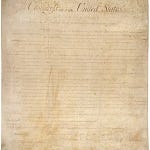This Day in Legal History: Equal Rights Party Formed
On September 20, 1884, a group of American suffragists formed the Equal Rights Party in San Francisco, marking a significant moment in the fight for gender equality in the United States. The party was established with the goal of securing "equal and exact justice" for all citizens, regardless of color, sex, or nationality. A key focus was on amending state laws to recognize women as voters and to ensure equal property rights, aiming to empower women to become self-sufficient rather than remain dependent.
In a bold move, the party nominated Mrs. Belva Lockwood as its candidate for U.S. President and Marietta Snow for Vice-President. Lockwood, a lawyer and prominent suffragist, became one of the first women to actively campaign for the presidency. While Grover Cleveland ultimately won the election, Lockwood’s candidacy broke new ground. She garnered around 4,149 votes, all cast by male voters, as women did not yet have the right to vote nationally.
This event showcased the growing momentum of the women’s suffrage movement, which would eventually lead to the passage of the 19th Amendment in 1920, granting women the right to vote. The Equal Rights Party's formation highlighted the early intersection of gender, legal rights, and political advocacy in American history.
An Alaska man, Panos Anastasiou, has been indicted for sending over 450 threatening messages to six U.S. Supreme Court justices and two of their family members. The threats, which began in March 2023 and escalated in January 2024, included violent, racist, and homophobic language, as well as calls for assassination and torture. Federal prosecutors allege that the messages were intended to intimidate and retaliate against the justices for their legal decisions.
Attorney General Merrick Garland emphasized that the threats undermine the judiciary’s independence and public officials' safety. While the indictment did not name the specific justices targeted, details in court filings suggest that some threats were directed at Justice Clarence Thomas, referencing racist tropes and his wife’s political activism. Anastasiou has been temporarily detained, with prosecutors expressing concern that he poses a flight risk and a continued danger due to his history of threats against public officials. The case follows a growing concern for the security of federal judges, highlighted by recent threats against other Supreme Court justices, including an attempted assassination of Justice Brett Kavanaugh in 2022.
Alaska Man Charged With Threatening Supreme Court Justices (1)
Following the U.S. Supreme Court’s 2023 decision to ban race-conscious admissions, Harvard Law School saw a drop in students of color, with the percentage decreasing from 51% in 2023 to 43% in the new class. This is the first class admitted after the ruling, which stemmed from cases against Harvard and the University of North Carolina. The data from Harvard does not break down racial groups, leaving unclear how different minority groups were affected. The overall decline translates to about 45 fewer non-white students out of a class of 560, marking the lowest diversity percentage since 2017. Other top law schools have reported mixed results, with some maintaining or increasing their diversity. The University of California, Berkeley School of Law, which has been under a state affirmative action ban since 1996, also reported a decline in students of color. More detailed racial breakdowns from law schools will be provided by the American Bar Association in December.
In a long-running lawsuit accusing Google of secretly tracking internet browsing in "incognito" mode, a major dispute remains over legal fees. Plaintiffs' lawyers from firms like Boies Schiller Flexner and Morgan & Morgan are seeking $217 million in fees for securing a settlement that mandates Google to delete billions of records and update privacy disclosures.
Google has countered, arguing the fees should be capped at $40 million, claiming the settlement offers no monetary relief for consumers since the lawsuit failed to gain class-action status. Plaintiffs’ attorneys claim their work, valued at $62.4 million in time, provides $3 to $6 billion in privacy benefits to consumers. U.S. District Judge Yvonne Gonzalez Rogers, who presides over the case, noted the plaintiffs were not entirely successful but did acknowledge the significance of the privacy reforms. She also questioned some of the billing rates, calling $667 per hour for document review “excessive.” The case is awaiting a final ruling on the fee dispute. Other recent legal fee awards include $107.8 million in a separate Apple settlement and $102 million for attorneys in a stock-lending conspiracy case.
Legal Fee Tracker: Google, privacy lawyers clash over $217 million fee bid | Reuters
Johnson & Johnson (J&J) has increased its offer to over $8.2 billion to settle thousands of lawsuits alleging that its talc-based baby powder caused cancer, up from a previous $6.5 billion offer. This increase reflects a potential $1.7 billion hike to resolve the litigation, with claimants expected to receive larger payouts and $650 million allocated to cover legal fees. Despite continuing settlement talks, J&J maintains its baby powder is safe and has been marketed appropriately for over 100 years.
The company has already secured over 75% support from claimants for a settlement covering cases related to ovarian and other gynecological cancers, which may expedite resolution through bankruptcy courts. Some plaintiffs, however, have yet to agree to the terms. J&J has also settled 95% of claims alleging that its baby powder was contaminated with asbestos, leading to mesothelioma. Analysts expect the additional $1.1 billion increase to be within acceptable limits for investors, contributing to a recent rise in J&J’s stock. Total payouts related to the baby powder litigation now exceed $13.4 billion.
J&J Lifts Baby Powder Settlement Bid to More Than $8.2 Billion
Aviation executive Farhad Azima has settled a lawsuit with law firm Dechert and two of its former senior attorneys, Neil Gerrard and David Hughes, over claims they participated in a scheme to hack Azima's emails and use the information in court to harm his business. The terms of the settlement, which was reached in New York, were not disclosed, and Dechert denied any liability in the case. This marks another legal victory for Azima, who previously had British judgments against him thrown out after it was revealed that hackers had been used by Dechert's client, the Gulf emirate of Ras Al Khaimah. Earlier in 2024, Dechert paid Azima £3 million ($3.8 million) to settle a separate case in the U.K. without admitting liability. The firm also settled with journalist Jay Solomon, another hacking victim, last year. Azima continues to pursue legal action against other parties involved in the hacking, including Israeli private investigator Amit Forlit, who faces extradition to the U.S. on related charges.
Aviation executive Farhad Azima settles with law firm Dechert over hacking claim | Reuters
This week’s closing theme is by Franz Liszt.
Franz Liszt was one of the most influential and innovative composers and pianists of the 19th century. Known for his breathtaking piano technique and wide-ranging compositions, Liszt's musical legacy includes both virtuosic showpieces and deeply spiritual works. While his early career was defined by dazzling performances across Europe, his later years saw a profound religious transformation. This turn towards spirituality is epitomized by his ordination as a cleric on this date, September 20, 1865, a significant date in his life that influenced his compositional direction.
One of Liszt's most introspective and spiritual compositions from this period is Via Crucis, written between 1878 and 1879. It is a moving meditation on the Stations of the Cross, combining minimalistic textures and religious themes. The work strips away the flamboyance of his earlier pieces, reflecting a profound inner contemplation. The opening movement, Vexilla Regis, captures the solemnity and grandeur of Christ's procession to the crucifixion, using austere harmonies and chant-like melodies to evoke deep reflection.
As we close this week's program, we'll leave you with Vexilla Regis, the opening theme of Via Crucis. This haunting and reverent piece sets the tone for Liszt’s spiritual masterpiece, inviting listeners into a quiet, reflective space. Without further ado, Franz Liszt's Vexilla Regis, from Via Crucis, enjoy.














